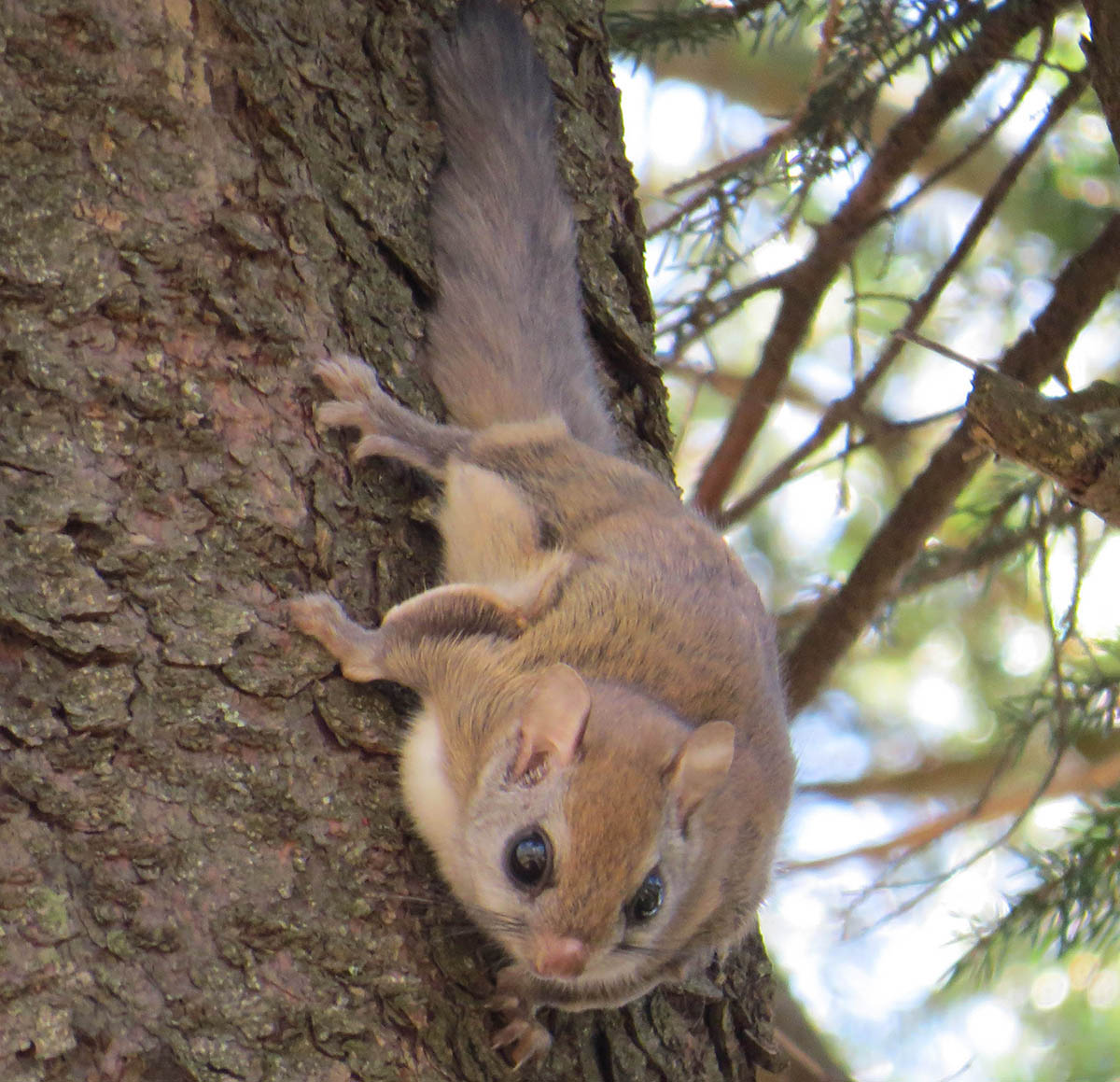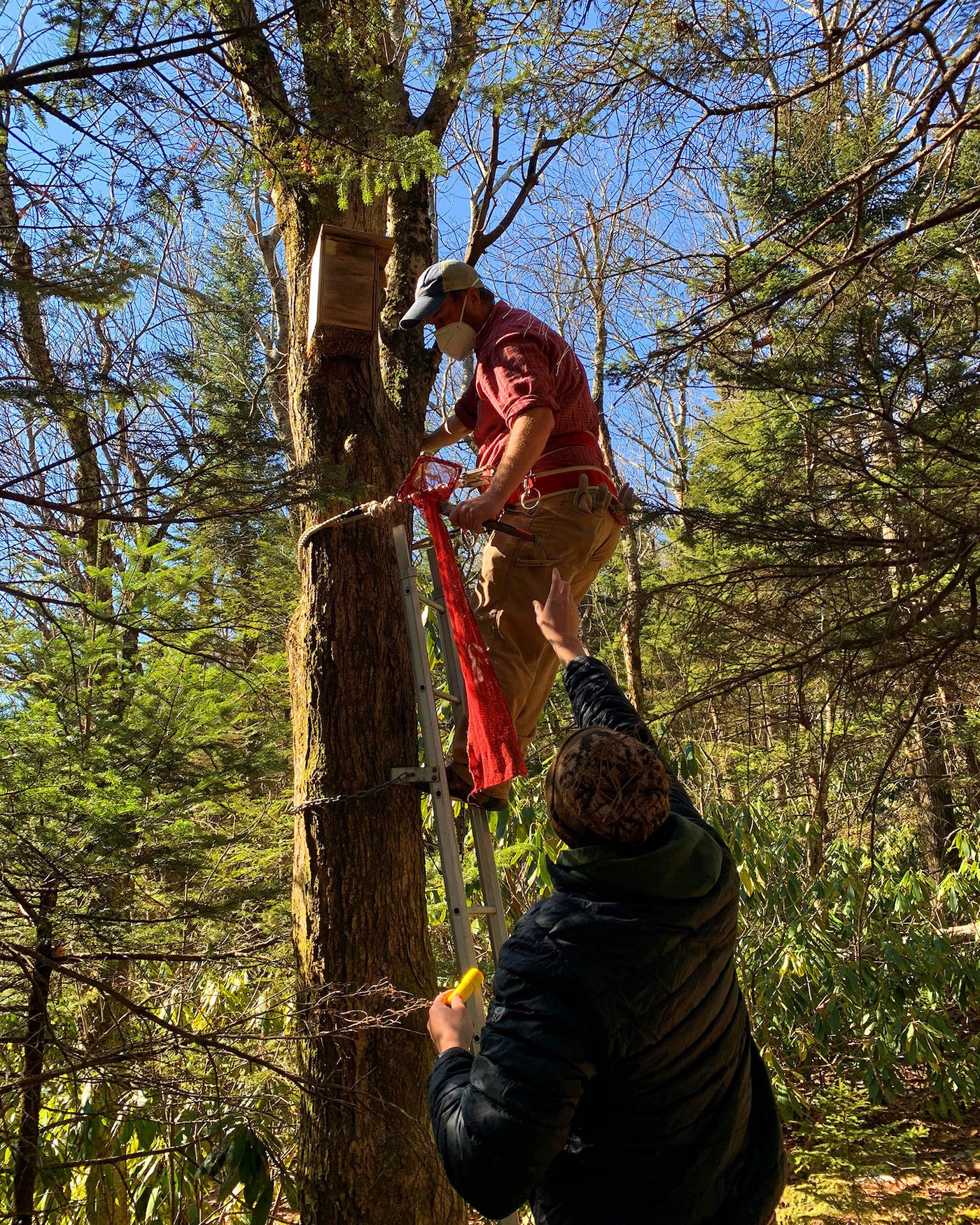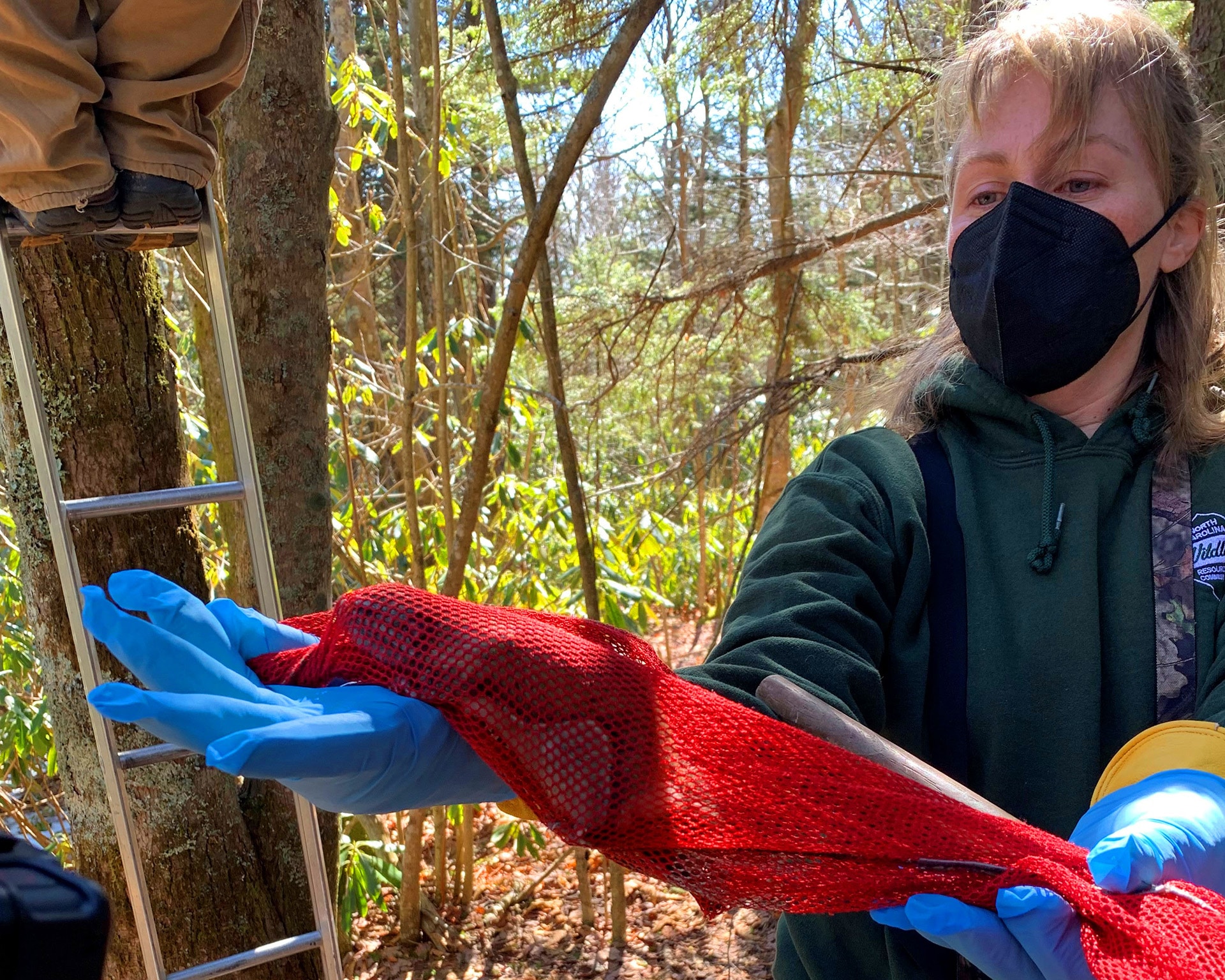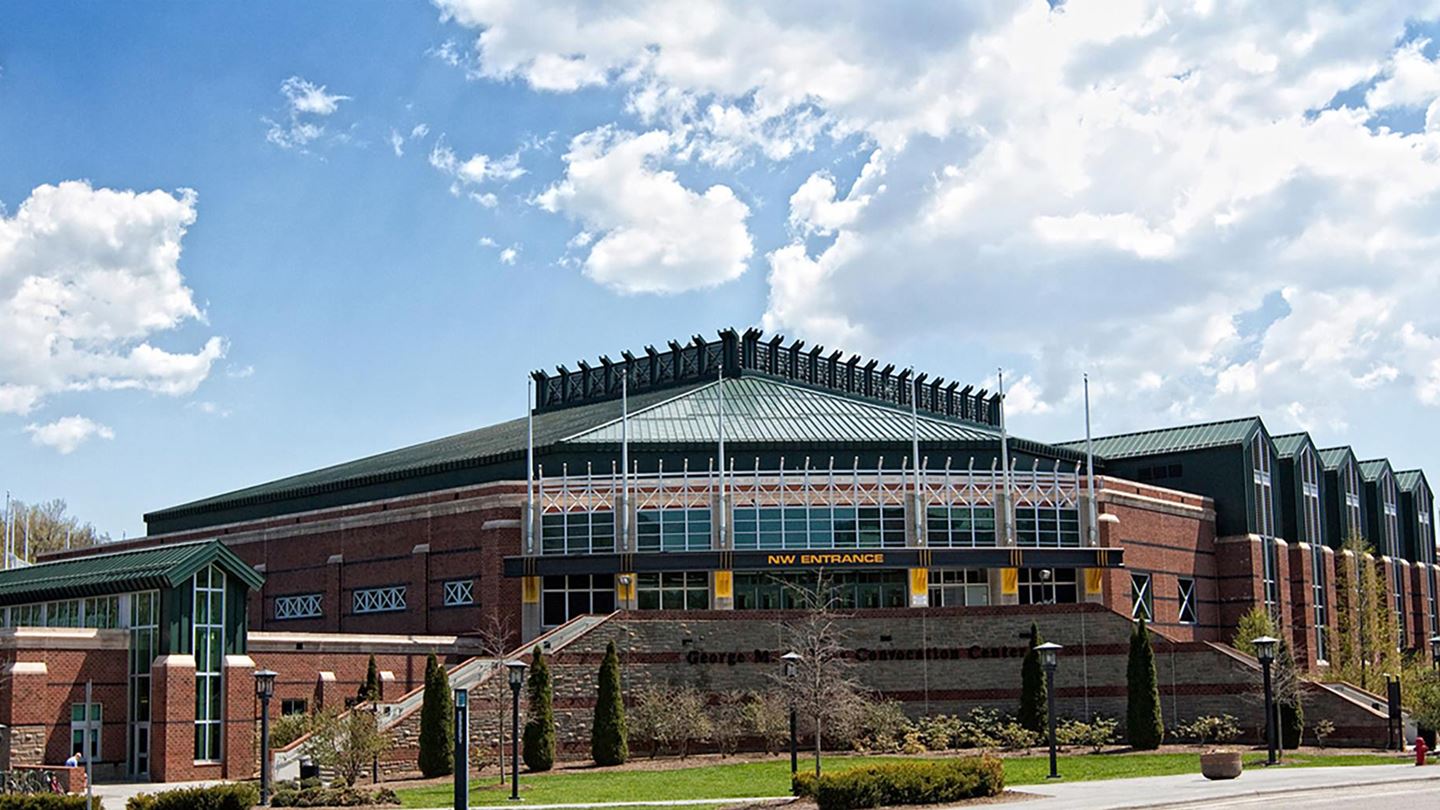
Last Updated on March 17, 2022 9:23 am
GRANDFATHER MOUNTAIN, N.C. — It’s a bird. It’s a plane. It’s a Carolina northern flying squirrel!
This past February, researchers with the N.C. Wildlife Resources Commission, N.C. Division of Parks and Recreation and Grandfather Mountain Stewardship Foundation conducted their annual population count of one of North Carolina’s endangered species found on Grandfather Mountain: the Carolina northern flying squirrel.
During the Wildlife Commission’s recent study on the mountain, the state agency was able to identify five Carolina northern flying squirrels using a series of nest boxes along a transect line. The researchers monitor trends in occupancy, or “presence/absence” of flying squirrels that exist on the mountain based on the squirrels they find in their studies. They then use this data to examine trends in occupancy over time.
Currently, up-to-date monitoring data are not available to the public. However, John Caveny, director of education and natural resources with the Grandfather Mountain Stewardship Foundation, the nonprofit organization that owns and operates the Linville, N.C., nature park, has participated in the studies for the past several years and said that, on average, it is typical to find six to 10 squirrels during one of these studies.
“For the most part, it is safe to say that our population at Grandfather Mountain is stable,” Caveny said.
The number of squirrels detected annually has varied throughout the study. This is due in part to the fact that northern flying squirrels have multiple den sites and may not be using a nest box on the day of the survey. Biologists suspect a variety of factors influence use of boxes, including recent weather and food availability. Imperfect detection of a rare, elusive, nocturnal species often requires multiple survey and monitoring techniques. NCWRC biologists supplement the nest box monitoring with acoustic monitoring that uses an automated recording unit to record the vocalizations of flying squirrels.
As part of the winter nest box monitoring, researchers gently coax the squirrel out of a nest box, which the squirrels use for denning and rearing their young, and into a mesh bag. They then measure the squirrel’s hindfoot length in order to verify if it is a Carolina northern flying squirrel, whose feet are longer than the more common southern flying squirrel.
Moreover, the range of the northern species is restricted to high-elevation forests, while southern flying squirrels are more commonly found in lower elevations. Northern flying squirrels have bright cinnamon-brown colored fur and a cape of loose skin that stretches from their wrists to ankles, allowing them the ability to glide through the air. Other features that set the northern flying squirrel apart include bicolored belly hairs (gray and white) and the fact that these squirrels weigh nearly twice as much as their southern counterparts.
Biologists also examine the color of the squirrel’s tail, which indicates its age, and they also verify its weight, sex and reproductive condition. All five of the squirrels that the researchers found were male, which is not unusual given that the study is conducted during one of the squirrel’s breeding periods when males are particularly active.
As a distinct sub-species of the more commonly found northern flying squirrel, which thrives in the boreal forests of Canada, the Carolina northern flying squirrel is a species that plays a critical role in determining the health of its environment. These squirrels are known as an indicator species, meaning that the health of this population of squirrels corresponds with the health of the forest as a whole.
“This species is only found in the spruce-fir forest and northern hardwood forests,” Caveny said. “Spruce-fir forests are the second most endangered forest community in the U.S. If we lose these forests, then we lose these squirrels. What population trends can help show us is if there is something going on in that habitat, such as an invasive species like the balsam woolly adelgid that’s killing trees that the squirrels den in or some other invasive species that is out-competing them for the food sources they have.”
The Carolina northern flying squirrel perpetuates its own forest habitat. Unlike other species of squirrel that help populate the forests’ trees and other plants by burying acorns and seeds, the Carolina northern flying squirrel does so by primarily feeding on and spreading truffles, a type of fungi that is found on the roots of trees.
These fungi are a critical organism that trees use as a source of water, while the fungi themselves use the trees as a source for sugar. As the squirrels eat the outer shell of the truffle, they inadvertently consume and then pass the undigested spores from the truffle throughout the forest in a way that only flying squirrels can.
As one of Grandfather Mountain’s 72 threatened or endangered species, the Carolina northern flying squirrel has been studied at Grandfather Mountain since the 1990s. The species was first discovered in North Carolina in the 1950s and later listed as federally endangered in 1985. The Carolina northern flying squirrel is only found in nine locations throughout Western North Carolina, Eastern Tennessee and Southwest Virginia.
The species was identified at Grandfather Mountain once research expanded beyond Mt. Mitchell, Roan Mountain and the Great Smoky Mountains after it was classified endangered. Ever since, staff from Grandfather Mountain and Grandfather Mountain State Park have assisted in research.
To learn more about the endangered species that exist on Grandfather Mountain, visit www.grandfather.com/protecting-endangered-species.
The nonprofit Grandfather Mountain Stewardship Foundation strives to inspire conservation of the natural world by helping guests explore, understand and value the wonders of Grandfather Mountain. For more information, call 800-468-7325, or visit www.grandfather.com to book a trip.
Researchers with the NCWRC search for Carolina northern flying squirrels in nest boxes on Grandfather Mountain. Photo by H Patton | Grandfather Mountain Stewardship Foundation

NCWRC wildlife biologist Christine Kelly holds a Carolina northern flying squirrel during the agency’s annual population count on Grandfather Mountain. Photo by H Patton | Grandfather Mountain Stewardship Foundation




















